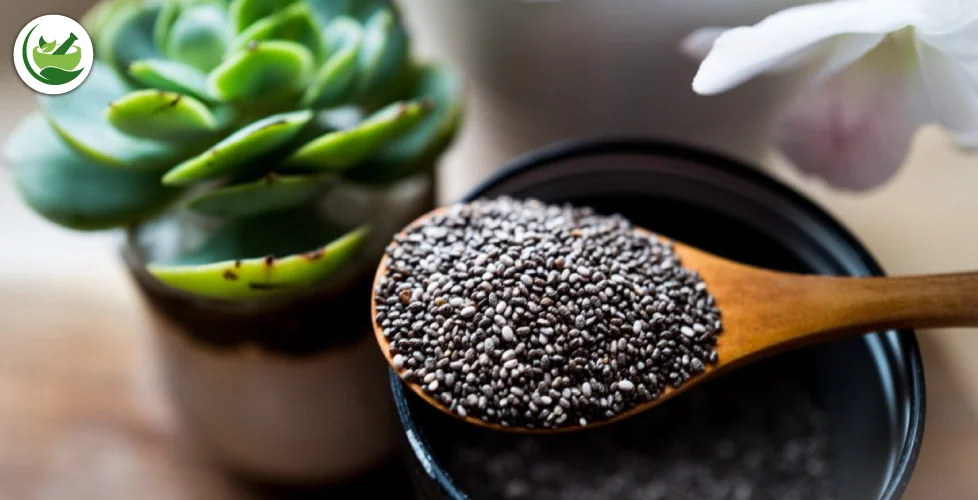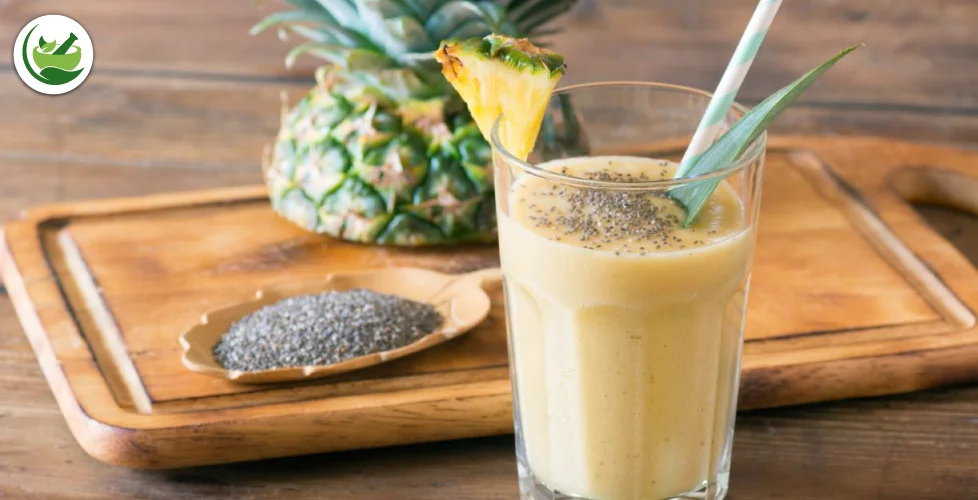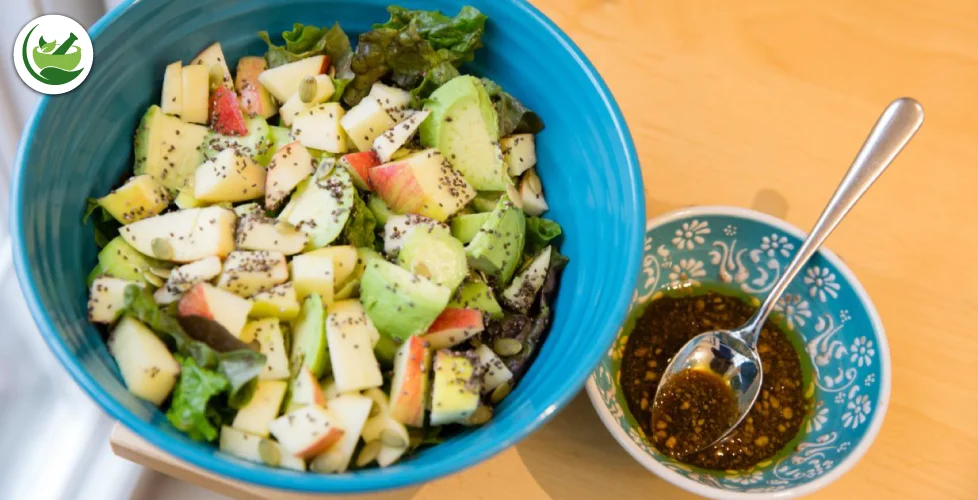High blood pressure, also known as hypertension, is a common health condition that can lead to serious complications if left unmanaged. One natural remedy gaining popularity is chia seeds. These tiny seeds are packed with nutrients that can help manage blood pressure levels. This blog will explore easy and healthy ways to incorporate chia seeds into your diet to help manage high blood pressure.

What Are Chia Seeds?
Chia seeds are small, edible seeds that come from the plant Salvia hispanica, a member of the mint family. Originating from Central and South America, these seeds were a staple in the diets of ancient Aztec and Mayan civilizations. Chia seeds are known for their high nutritional content, including omega-3 fatty acids, fiber, protein, and essential minerals such as calcium, magnesium, and potassium. They are versatile and can be added to various foods and beverages, making them an easy addition to a healthy diet.
What is High Blood Pressure?
High blood pressure, or hypertension, is a condition where the force of the blood against the walls of the arteries is consistently too high. This can lead to serious health problems, including heart disease, stroke, and kidney damage.
Blood pressure is measured in millimeters of mercury (mmHg) and is expressed with two numbers: systolic pressure (the pressure when the heart beats) over diastolic pressure (the pressure when the heart is at rest).
A normal blood pressure reading is usually around 120/80 mmHg. High blood pressure is typically diagnosed when readings are consistently at or above 130/80 mmHg. Managing high blood pressure often involves lifestyle changes, such as diet and exercise, and sometimes medication.
Related blog The Impact Of Chia Seed Benefits For Diabetes On Blood Sugar Management
Understanding the Benefits of Chia Seeds
Chia seeds are tiny black seeds from the plant Salvia hispanica, which is related to mint. Despite their small size, chia seeds are rich in nutrients and have several health benefits:
- Omega-3 Fatty Acids: Chia seeds are a great source of plant-based omega-3 fatty acids, which can help reduce inflammation and lower blood pressure.
- Fiber: High in soluble fiber, chia seeds can help lower cholesterol levels and improve heart health.
- Antioxidants: They contain antioxidants that help protect the heart and overall health.
- Minerals: Chia seeds are high in essential minerals like magnesium, calcium, and potassium, which are crucial for maintaining healthy blood pressure levels.
Related blog How The Benefits Of Chia Seeds And Diverticulitis Can Improve Your Digestive Health
How Chia Seeds Can Help Manage High Blood Pressure
Several components of chia seeds contribute to their potential in managing high blood pressure:
- Omega-3 Fatty Acids: These fatty acids help to relax blood vessels, reduce inflammation, and lower blood pressure.
- High Fiber Content: Soluble fiber in chia seeds helps to reduce bad cholesterol (LDL) levels, which can help lower blood pressure.
- Magnesium and Potassium: These minerals help regulate blood pressure by balancing the effects of sodium in the body and supporting healthy blood vessel function.

Easy and Healthy Ways to Use Chia Seeds
Incorporating chia seeds into your diet is simple and versatile. Here are some easy and healthy ways to use chia seeds for managing high blood pressure:
Related blog Maximizing Nutritional Benefits: Chia Seeds And Flax Seeds Together
1. Chia Seed Water
Chia seed water is a simple and refreshing way to incorporate chia seeds into your daily routine. This hydrating drink is easy to prepare and offers a quick boost of nutrients, making it an excellent addition to your diet for managing high blood pressure.

Ingredients:
- 1 tablespoon chia seeds
- 1 glass of water
- Optional: Lemon or honey for flavor
Instructions:
- Mix 1 tablespoon of chia seeds in a glass of water.
- Let it sit for 10-15 minutes until the seeds swell and form a gel-like consistency.
- Add lemon or honey if desired and drink it once a day.
2. Chia Seed Smoothie
Chia seed smoothies are a delicious and convenient way to boost your nutrient intake. Packed with vitamins and minerals, they make a perfect healthy snack or meal replacement.

Ingredients:
- 1 tablespoon chia seeds
- 1 cup of your favorite fruit (e.g., berries, banana, mango)
- 1 cup of leafy greens (e.g., spinach, kale)
- 1 cup of water or almond milk
- Optional: 1 tablespoon honey or maple syrup
Instructions:
- Add chia seeds to the blender with your fruit and greens.
- Pour in water or almond milk.
- Blend until smooth.
- Sweeten with honey or maple syrup if desired.
3. Chia Seed Pudding
Chia seed pudding is a versatile and nutritious dish that can be enjoyed for breakfast or as a healthy dessert. It’s easy to prepare and can be customized with various toppings to suit your taste.

Ingredients:
- 2 tablespoons chia seeds
- 1 cup almond milk or any preferred milk
- 1 teaspoon vanilla extract
- 1 tablespoon honey or maple syrup
- Optional toppings: Fresh fruit, nuts, granola
Instructions:
- Mix chia seeds, almond milk, vanilla extract, and sweetener in a bowl.
- Stir well to combine.
- Cover and refrigerate for at least 2 hours or overnight until it thickens to a pudding-like consistency.
- Top with fresh fruit, nuts, or granola before serving.
4. Chia Seed Salad Dressing
Elevate your salads with a nutritious and flavorful chia seed salad dressing. This easy-to-make dressing adds a healthy twist to your greens while helping to manage high blood pressure.

Ingredients:
- 1 tablespoon chia seeds
- 1/4 cup olive oil
- 2 tablespoons balsamic vinegar
- 1 teaspoon Dijon mustard
- Salt and pepper to taste
Instructions:
- Mix chia seeds with olive oil, balsamic vinegar, and Dijon mustard in a small bowl.
- Whisk until well combined.
- Season with salt and pepper.
- Drizzle over your favorite salad.
Related blog Are Chia Seeds Gluten-Free? Health Benefits, Dietary Recommendations, And Tips
Nutritional Comparison
To better understand the health benefits of chia seeds, here’s a detailed comparison of their nutritional content per tablespoon and per two tablespoons. This comparison highlights their rich nutrient profile, making them a valuable addition to your diet for managing high blood pressure.
| Nutrient | Amount per 2 tbsp (28g) of Chia Seeds | Amount per 1 tbsp of Chia Seeds |
|---|---|---|
| Calories | 138 | 58 |
| Protein | 4.7g | 2g |
| Total Fat | 8.7g | – |
| Omega-3 Fatty Acids | 5g | 4915 mg |
| Fiber | 9.8g | 5.5g |
| Calcium | 177mg | 76mg |
| Magnesium | 95mg | 40mg |
| Potassium | 44.8mg | 58mg |
Related blog Health Benefits of Black vs. White Chia Seeds
Tips for Using Chia Seeds
Incorporating chia seeds into your diet can be simple and beneficial. Here are some practical tips to help you make the most of these nutritious seeds for better health and well-being.
- Start Slow: If you’re new to chia seeds, start with small amounts and gradually increase to avoid digestive discomfort.
- Stay Hydrated: Chia seeds absorb a lot of water, so it’s important to drink plenty of fluids when consuming them.
- Experiment with Recipes: Chia seeds can be added to a variety of foods, so get creative with how you incorporate them into your diet.
Conclusion
Chia seeds are a powerful superfood that can support heart health and help manage high blood pressure. By incorporating them into your daily routine through simple recipes like chia seed water, smoothies, puddings, and salad dressings, you can enjoy their health benefits in a delicious and convenient way. Remember to consult with your healthcare provider before making significant changes to your diet, especially if you have any underlying health conditions.






